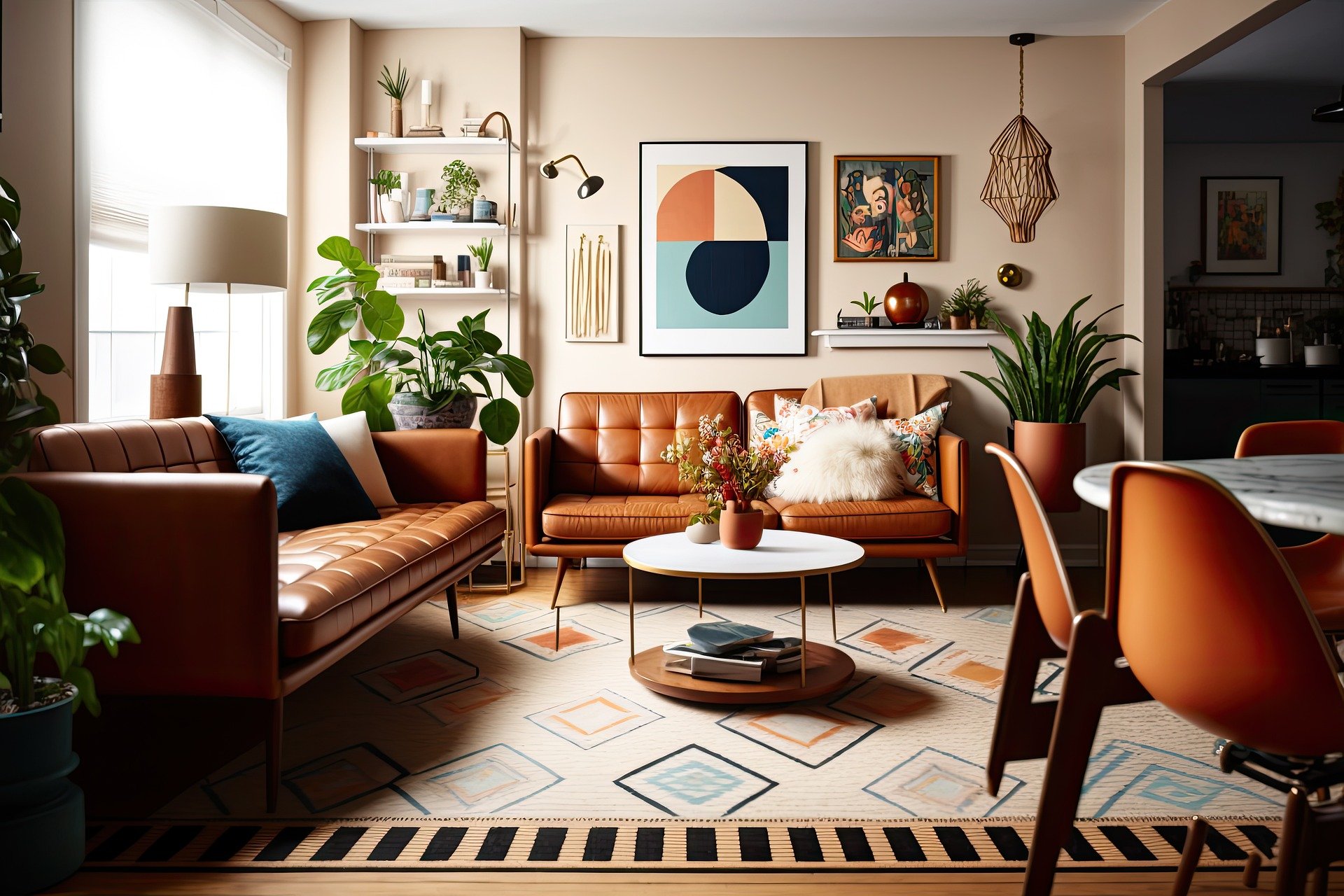Wabi-Sabi: The Art of Imperfect Beauty in Home Design
In a world obsessed with perfection, a quiet revolution is taking place in home design. Wabi-sabi, an ancient Japanese philosophy, is making its way into modern interiors, challenging our notions of beauty and encouraging us to embrace the imperfect, impermanent, and incomplete. This centuries-old concept is not just a design trend, but a way of life that celebrates the beauty of natural processes and the passage of time.

The Roots of Wabi-Sabi
Wabi-sabi finds its origins in 16th century Japanese tea ceremonies, where simplicity and rustic elegance were revered. The term combines two concepts: wabi, which refers to the beauty of simplicity and humble living, and sabi, which embraces the passage of time and the beauty of aging. Together, they form a worldview that sees beauty in the flawed and finds peace in the natural cycle of growth and decay.
In traditional Japanese aesthetics, wabi-sabi manifested in asymmetrical ceramics, weathered wood, and the subtle play of light and shadow. These elements were not seen as imperfections to be corrected, but as essential aspects of an object’s character and charm. This philosophy stands in stark contrast to Western ideals of symmetry, permanence, and grandeur.
Wabi-Sabi in Modern Home Design
Today, wabi-sabi is experiencing a renaissance in home design, offering a refreshing antidote to the sleek, mass-produced aesthetic that has dominated in recent years. Designers and homeowners are increasingly drawn to its emphasis on authenticity, mindfulness, and connection to nature.
In a wabi-sabi inspired home, you might find:
-
Natural materials like wood, stone, and clay, left in their raw state or minimally processed
-
Handcrafted items with visible imperfections that tell the story of their creation
-
Neutral color palettes inspired by earth tones, creating a sense of calm and groundedness
-
Plants and organic forms that bring the outside in and evolve over time
-
Furniture and decor with patina or signs of wear, celebrated rather than hidden
The Philosophy Behind the Aesthetics
Wabi-sabi is more than just a design style; it’s a philosophy that can profoundly impact how we live in and relate to our homes. At its core, wabi-sabi encourages us to:
-
Find beauty in imperfection: Rather than striving for flawlessness, wabi-sabi teaches us to appreciate the unique characteristics and flaws that make objects special.
-
Embrace impermanence: By acknowledging that nothing lasts forever, we can find joy in the present moment and the natural cycles of life.
-
Practice mindfulness: Wabi-sabi encourages a slower, more contemplative approach to living and consuming.
-
Connect with nature: By incorporating natural elements and processes into our homes, we can foster a deeper connection with the world around us.
Incorporating Wabi-Sabi into Your Home
Adopting wabi-sabi principles doesn’t require a complete home overhaul. Small, thoughtful changes can make a significant impact:
-
Choose natural materials: Opt for furniture and decor made from wood, stone, clay, or natural fibers.
-
Embrace imperfections: Display items with visible repairs or signs of age, like a cracked vase or a weathered wooden bowl.
-
Add texture: Incorporate rough textures through woven baskets, raw linen, or unglazed ceramics.
-
Bring nature indoors: Add plants, branches, or stones to create a connection with the outdoors.
-
Simplify: Remove unnecessary clutter and focus on items that have meaning or bring joy.
The Benefits of a Wabi-Sabi Home
Beyond its aesthetic appeal, a wabi-sabi inspired home can have profound effects on our well-being:
-
Reduced stress: The emphasis on simplicity and acceptance can create a calming environment that reduces anxiety.
-
Increased mindfulness: By surrounding ourselves with objects that encourage contemplation, we can cultivate a more mindful approach to daily life.
-
Enhanced creativity: The acceptance of imperfection can free us from creative blocks and encourage experimentation.
-
Sustainable living: Wabi-sabi’s focus on longevity and appreciation for worn items aligns with eco-friendly practices.
Wabi-Sabi and Modern Technology
While wabi-sabi might seem at odds with modern technology, there are ways to harmoniously blend the two:
-
Choose tech products with natural materials or finishes, like wood-encased speakers or leather phone cases.
-
Opt for minimalist designs that don’t draw attention away from the overall aesthetic.
-
Use technology mindfully, incorporating it only where it truly enhances your life.
-
Consider hiding technology when not in use, using clever storage solutions or covers.
The Future of Wabi-Sabi in Home Design
As we move towards a more sustainable and mindful future, wabi-sabi principles are likely to become increasingly relevant in home design. The philosophy’s emphasis on quality over quantity, appreciation for natural processes, and acceptance of imperfection aligns well with growing concerns about consumerism and environmental impact.
Designers are already finding innovative ways to incorporate wabi-sabi into modern homes, from developing new techniques for creating intentionally imperfect finishes to sourcing materials with rich histories and unique characteristics. As this trend evolves, we can expect to see a greater emphasis on craftsmanship, local materials, and designs that age gracefully over time.
Conclusion: Finding Beauty in the Imperfect
In a world that often feels chaotic and uncertain, wabi-sabi offers a path to finding peace and beauty in our immediate surroundings. By embracing imperfection, celebrating the passage of time, and connecting with the natural world, we can create homes that are not just visually appealing, but deeply nourishing to the soul.
As we look to the future of home design, wabi-sabi reminds us that true beauty lies not in perfection, but in authenticity, mindfulness, and the quiet dignity of objects that have been loved and lived with over time. In embracing these principles, we may find that our homes become not just places to live, but sanctuaries that reflect and support our deepest values and aspirations.




